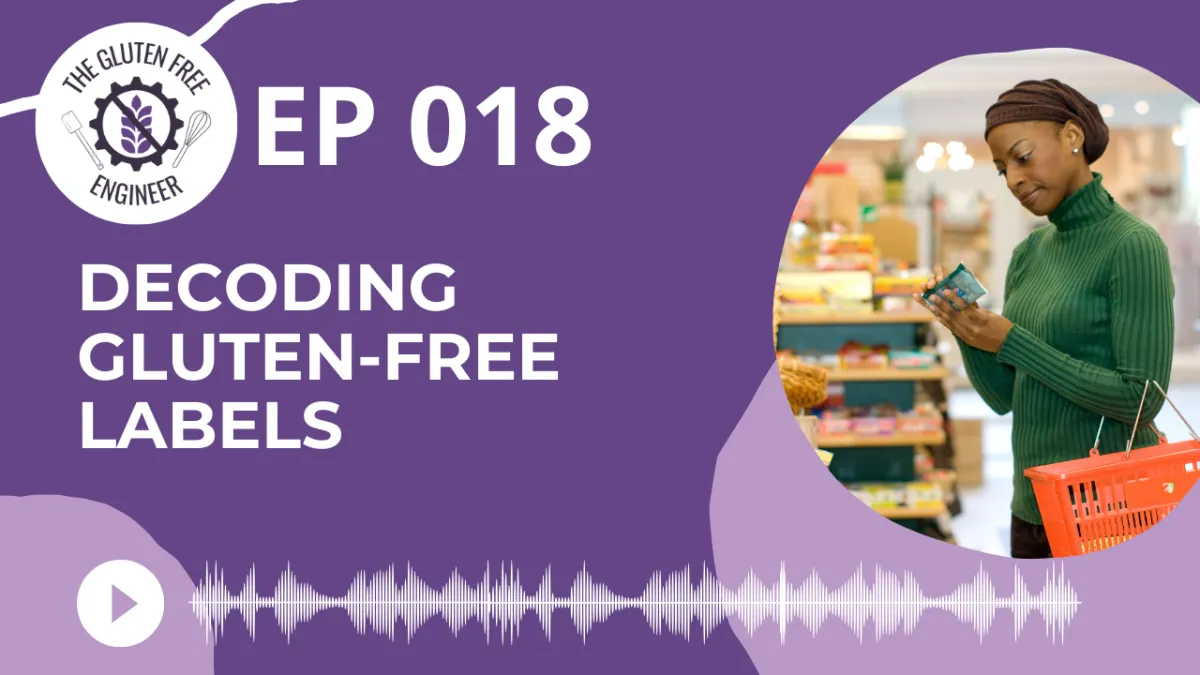
#18: Decoding Gluten-Free Labels
You know that moment—you pick up a product that looks safe, it says “gluten-free” in bold letters… but something still makes you hesitate.
Can you trust the label? What about that “processed in a facility with wheat” note? What the heck is “malt extract” anyway?
If you’ve ever stood in a grocery aisle Googling ingredients, this episode is for you. Today I’m breaking down how to read gluten-free labels with confidence—so you can spend less time stressing and more time actually enjoying your food!
Let's Recap: How to Read a Gluten-Free Label
🧠 What “Gluten-Free” Actually Means (and What It Doesn’t)
In the U.S., “gluten-free” means:
✔ Contains less than 20 ppm of gluten
✔ Cannot contain wheat, barley, rye, or crossbred hybrids
✔ BUT… it doesn’t require certification or dedicated facilitiesWhat “certified gluten-free” means (vs. “gluten-free”):
Certified = 3rd party testing (GFCO, NSF, etc.)
Often stricter than FDA’s standard
Logos to look for: GFCO, CSA, etc.
✅ Bottom line: Gluten-free ≠ guaranteed safe for everyone (especially with cross-contact sensitivities)
🏷️ Phrases & Red Flags to Watch For
Here are some common label phrases—and what they really mean:
“Made in a facility with wheat” – cross-contact risk high
“Made on shared equipment with wheat” – more risk than “facility”
“May contain traces of wheat” – added voluntarily, but important to consider
“Contains wheat” – a hard no
💬 Tip: When in doubt, contact the company directly or check trusted GF communities online.
🕵️♀️ Hidden Gluten Ingredient Names
Gluten doesn’t always say “gluten.” Watch out for:
Malt (usually from barley)
Malt vinegar, malt extract, malt flavoring
Modified food starch (safe in U.S. unless wheat is listed)
Wheat starch (can be specially processed GF—but only if labeled as such)
Hydrolyzed wheat protein
Soy sauce (unless it says gluten-free—tamari is safer)
Flavored chips, soups, gravies, broths
🧠 The more processed something is, the more carefully you need to read.
🧃 How I Personally Read Labels (My Step-by-Step Shortcut)
Check for a certified GF logo – great!
Scan allergen warning (“contains wheat”) – dealbreaker
Read the ingredients list – look for hidden sources
Look for risk statements: shared facility/equipment
If unsure… I skip it or look it up later
💬I’ve trained myself to do this in less than 30 seconds—once you learn the key terms, it gets easier.
✨ Pro Tips for Building Confidence
Start with brands you trust and build from there
Save a “safe product list” in your phone for grocery runs
Ask companies questions—email or call
Join gluten-free Facebook groups for crowdsourced info
Print or save a gluten-free ingredient cheat sheet (mention this as a possible lead magnet/download!)
✅ Key Takeaways:
“Gluten-free” doesn’t always mean safe—context matters
Learn the tricky ingredients and phrases to watch for
The more you read, the easier it gets—practice = peace of mind
Trust your gut (literally and figuratively!)
